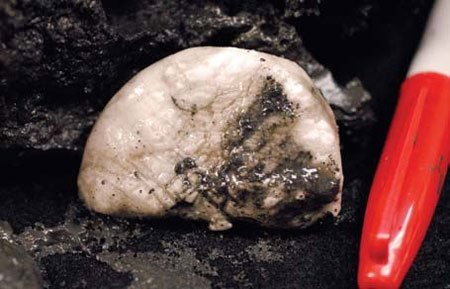China likely to make breakthrough in tapping gas hydrates
2009-10-14 17:13 BJT
BEIJING, Sept. 30 (Xinhuanet) -- China will likely make a breakthrough in developing gas hydrates, which have been recently discovered on the Qinghai-Tibet Plateau, according to an expert in geological prospecting.
The hydrate, which is also known as combustible ice, is a solid matter formed by water and natural gas under high-pressure and low-temperature conditions. It is considered the new energy with the largest deposit in the world.

Photo shows the gas hydrates. China will likely make a breakthrough in developing gas hydrates, which have been recently discovered on the Qinghai-Tibet Plateau, according to an expert in geological prospecting(Photo: chinadaily.com.cn)
Zhang Hongtao, chief engineer of China‘s Ministry of Land and Resources, said that the discovery of gas hydrates is comparable to the discovery of the Daqing Oilfield 50 years ago.
With a combined permafrost area of 2.15 million sq km, China enjoys advantages in gas hydrates deposits.
Scientists estimate that the hydrates can provide the equivalent of 35 billion tons of crude oil in energy, enough for consumption for 90 years in China, whereas the deposits in Qinghai Province alone make up one quarter.
Wen Huaijun, chief engineer of the No.105 Qinghai Coal Geological Prospecting Team, said that the unique geographical and topographic features make Qinghai‘s Muli Region China‘s first place where gas hydrates have been found.
He said that thanks to the shallow burial of coal deposits and the thin layer of permafrost soil in the region, breakthroughs are likely to be made in developing the gas hydrates.
However, how to protect the fragile ecological environment on the Qinghai-Tibet Plateau remains a major challenge in tapping the gas hydrates.
It is estimated that the world‘s deposits of gas hydrates are 50 times that of natural gas. The discovery of this new energy has brought hopes to the mankind suffering from energy crisis.
Editor: 盧佳穎 | Source: Xinhuanet

 Mail
Mail Share
Share Print
Print


 Video
Video









 2009 China Central Television. All Rights Reserved
2009 China Central Television. All Rights Reserved